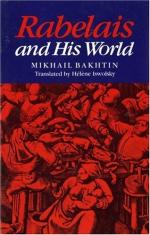
|
| Name: _________________________ | Period: ___________________ |
This quiz consists of 5 multiple choice and 5 short answer questions through Chapter 5, Chapter 2 - Language of the Marketplace Cont..
Multiple Choice Questions
1. "Tripe" literally refers to:
(a) A type of freshwater fish.
(b) A type of songbird.
(c) The main blood vessel in the brain of a human.
(d) The stomach and bowels of cattle.
2. In which twentieth-century movement was the grotesque especially evident?
(a) Futurism.
(b) Expressionism.
(c) Modernism.
(d) Impressionism.
3. Carnival allowed:
(a) The upper class to oppress relentlessly the lower class.
(b) The peasants to sell their crops without paying taxes.
(c) The endurance of the propriety expected of all social classes.
(d) The mixing of real and unreal, fantasy and fact.
4. Medieval parodies were:
(a) Concerned with the positive, humorous aspects of everything.
(b) Focused on the negative aspects of society.
(c) Limited to parody of individuals.
(d) Limited to religious parody.
5. Curses in Renaissance folk culture tended to focus most closely upon the victim's:
(a) Body.
(b) Family.
(c) Mind.
(d) Spirit.
Short Answer Questions
1. How are abusive and praiseful words reflective of grotesque realism?
2. According to Bakhtin, what is the function of art?
3. Bakhtin believes that novels are:
4. What are the "intelligentsia"?
5. When did the Russian Revolution occur?
|
This section contains 283 words (approx. 1 page at 300 words per page) |

|




